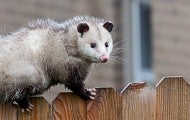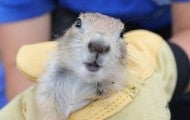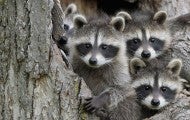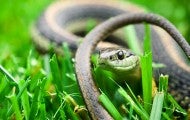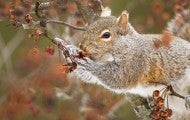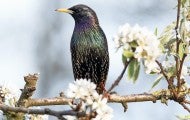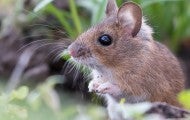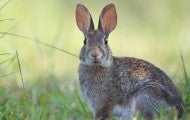Opossums get a bum rap. Often seen as pests and accused of everything from knocking over garbage cans to killing chickens, these quiet marsupials are rarely a threat and easily sent on their way. Learn More About Opossums Contents What are common problems and solutions with opossums? How can I keep...
Prairie dogs are one of the most controversial and widely misunderstood wildlife species in North America. Since early European migration onto the North American grasslands, prairie dogs have been celebrated as an essential keystone species for healthy grasslands ecosystems, but also vilified and...
Snakes instill a deep-rooted fear in many people that few other animals can match. Even other animals seem to put them in a special category; many wild animals recognize snakes as threatening, and some birds and monkeys even have special vocalizations for sounding an alarm when a snake is seen. But...
There are more than 200 squirrel species, but you’ve most likely only seen the most common in North America: Grey and black squirrels. Squirrels are fascinating to watch, photograph and study, and unlike most wildlife, they aren’t shy! But their adaptable nature means they’re adept at finding the...
European starlings are widespread across North America. They eat a wide variety of foods and are willing to use a wide variety of places to nest and roost. This flexible nature helps them thrive in cities and suburbs as well as on farms. They are one of only a few birds who live in otherwise barren...
Mice, like all animals, like to stay warm and fed, and often spend their lives comfortably inside buildings without causing any problems. If you still need to show them the door, these humane tips will help you find them a new home. Learn More About Mice Contents How can I humanely remove mice? What...
There are several species of wild rabbits—most are Eastern cottontail rabbits—who live across most of North America. Cottontails like to live at the edges of open areas. In fact, they are rarely found in dense forests or open grassland. Learn More About Rabbits Contents Why are there so many rabbits...
Perhaps more than any other wild animal, rats have adapted to living among humans. Rats are adaptable survivors, consistently resisting increasingly dangerous and cruel attempts to exterminate them, from progressively stronger poisons (which can cause collateral damage to other wildlife) to a wide...
MURCHISON, Texas—The wild Assateague Island horse who was removed from the Maryland tourist attraction by the National Park Service last month, is settling in seamlessly at Black Beauty Ranch, part of the Humane Society of the United States. The 13-year-old horse named Delegate’s Pride—also known as...
